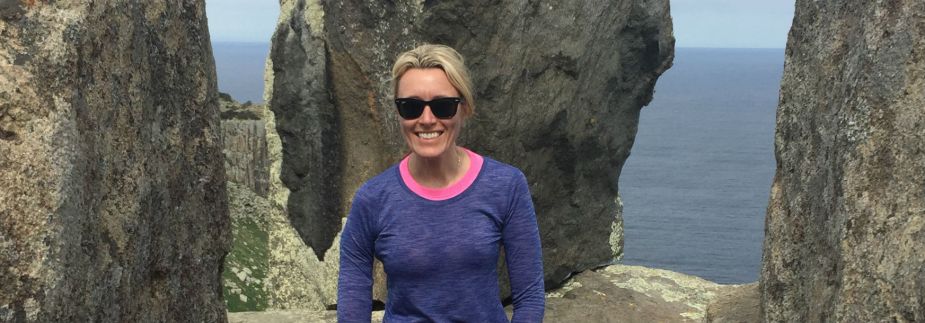Kay Stuart CA, MD of Global Investment Banking Infrastructure for RBC Capital Markets

Kay, now Managing Director in the Global Investment Banking Infrastructure team at RBC Capital Markets, has long had a passion for infrastructure. But it took a few years in her career before she discovered her zeal for the sector.
When government drags its feet on important policy matters, Kay says, the corporate world often shows leadership and gets the job done.
This is exactly what she’s seeing in Australia right now, as users of energy and infrastructure investors look towards renewables – solar farms, wind farms, pumped hydro, battery storage, etc. – while politicians squabble over the veracity of the global warming argument.
 Part way through her Law degree in Edinburgh, Kay Stuart knew the profession was not for her. Having grown up on a farm in Aberdeenshire, watching her parents run the farming business, she found herself increasingly attracted to a career in business and finance.
Part way through her Law degree in Edinburgh, Kay Stuart knew the profession was not for her. Having grown up on a farm in Aberdeenshire, watching her parents run the farming business, she found herself increasingly attracted to a career in business and finance.
An internship at a traditional law firm, where she “didn’t feel very useful”, confirmed her thoughts.
A summer job at Johnston Carmichael (“partly for the experience, partly for the money”) and an internship with Coopers & Lybrand made her realise that she thrived in the accounting and financial services environment.
She finished her Law degree with Honours, but continued on with Coopers & Lybrand, which had merged with PwC, when she commenced her ICAS qualification.
“In 1998, I started my training contract and followed the standard path in Audit for three years,” Kay said. “I had some interesting and high-profile clients along the way, like John Menzies and RBS.
“I loved the variety and training opportunity it offered and after three years I wanted to further grow into a more transactional focus. I moved into the Corporate Finance team and focused on greenfield infrastructure delivered under the public private partnership procurement (PPPs) model. That was where I was first exposed to the world of infrastructure, which is where I have stayed ever since.”
What do you find so attractive about infrastructure?
When I was doing PPPs, I was helping to create something tangible, such as hospitals or schools. It is real. Now, in investment banking, I’m in the world of buying and selling brownfield assets, or helping clients design appropriate capital structures. Infrastructure as an asset class is still quite young.
It really excelled out of the Global Financial Crisis (GFC); the volatility in the equity markets created a desire in pension funds to invest in ‘real assets’ with stable cashflows. It’s quite a young investment space – still evolving and very interesting.
And it’s full of nerds like me, who like analytics and who model out a business plan spanning more than 30 years!
What brought you to Australia?
I’d spent eight years in Edinburgh and at PwC in Australia there had been a team move to set up a competing team to EY. PwC needed someone at my level and asked, at the beginning of 2004, whether I wanted to go on secondment for two years to Sydney.
I extended my secondment for a further two years as I was having fun and enjoyed the smaller investment community where I was able to quickly grow my network. At that stage, after nine years with PwC, I was a new Director and had worked across the table from RBS on a student accommodation transaction.
They asked if I had thought about a career in investment banking. So just before the GFC hit, I decided to step out of my comfort zone and enter the quite different world of banking.
You joined RBC Capital Markets in 2015 as a Director and more recently became a Managing Director. What are the main challenges in your role?
Banking and particularly M&A can be difficult. You’ve got to love it and you’ve got to be resilient. There are disappointments along the way - things that are outside your control - so you’ve got to have an upbeat personality and lots of energy.
Ultimately, it’s about the variety that it offers and that I get to work alongside some very capable and smart individuals.
Are there any gender-related challenges?
The fact that I’m female has certainly made things interesting in the male-dominated world of investment banking and infrastructure, and my views on this topic have evolved throughout the years.
Being female, and by definition ‘different’, can sometimes be an advantage; people would often remember me because I was the only female in the room (with another inherent differentiator being my Scottish accent).
But as I have developed in my career, I have come to see how destructive the ‘groupthink’ mentality can be in decision making. I am a strong advocate of the value of diversity, not just in gender but in background and experience.
If you want a good decision-making process, you need diversity to challenge and provide perspectives.
How have you seen technology changing the field on which you work?
In terms of M&A and what we can now do around analytics and the ways we can process and analyse information, of course that has materially changed.
That is very helpful for what we do. But fundamentally, what we do is advisory. It is a people-based business.
We need to be attuned to what our clients are thinking and to what is front of mind for their investment committees.
Where technology becomes really interesting is in the ways it impacts the use of, and investment profile of, infrastructure. Take electric vehicles or autonomous vehicles, for example, and what they’re going to mean for toll-roads, or for electricity consumption and power generation, etc.
Previously, it was more about contractual cashflows and capacity... now it’s more about the customer experience and how their use of the asset will evolve.
Another simple example is check-in procedures at airports. As the process becomes quicker with technology, there’s more dwell time for passengers to spend money in the retail precinct. We spend quite a bit of time considering how these major technology developments could impact the cashflow profile of essential infrastructure investment assets.
Infrastructure funds are importantly focusing on the concepts of the customer and their social licence to operate critical infrastructure. Infrastructure investors are putting customers at the centre of the investment decision making.
Previously, it was more about contractual cashflows and capacity of say, a toll road, and now it’s more about the customer experience and how customers will evolve their use of the asset going forward.
Underlying drivers such as working habits and propensity to commute are far more relevant. Infrastructure investors are looking to protect against the downside of technology change or disintermediation, but also to capture the opportunity of the effects of technology.
Finally, where do you see growth happening in 2019?
There are a few key investment thematics which will continue to receive attention in 2019. Decarbonisation, energy transition, urbanisation and population growth/ageing.
Each of these thematics create investment opportunity as infrastructure investors continue to broaden the definition of traditional infrastructure.
It makes for an interesting and exciting year.
About the author
Chris Sheedy is one of Australia’s busiest and most successful freelance writers. He has been published regularly in the Sydney Morning Herald, Virgin Australia Voyeur, The Australian Magazine, GQ, In The Black, Cadillac, Management Today, Men’s Fitness and countless other big-brand publications. He is frequently commissioned to carry out copywriting and corporate writing projects for organisations, including banks, universities, television networks, restaurant chains and major charities, through his business The Hard Word.

 By Chris Sheedy, CA Today
By Chris Sheedy, CA Today